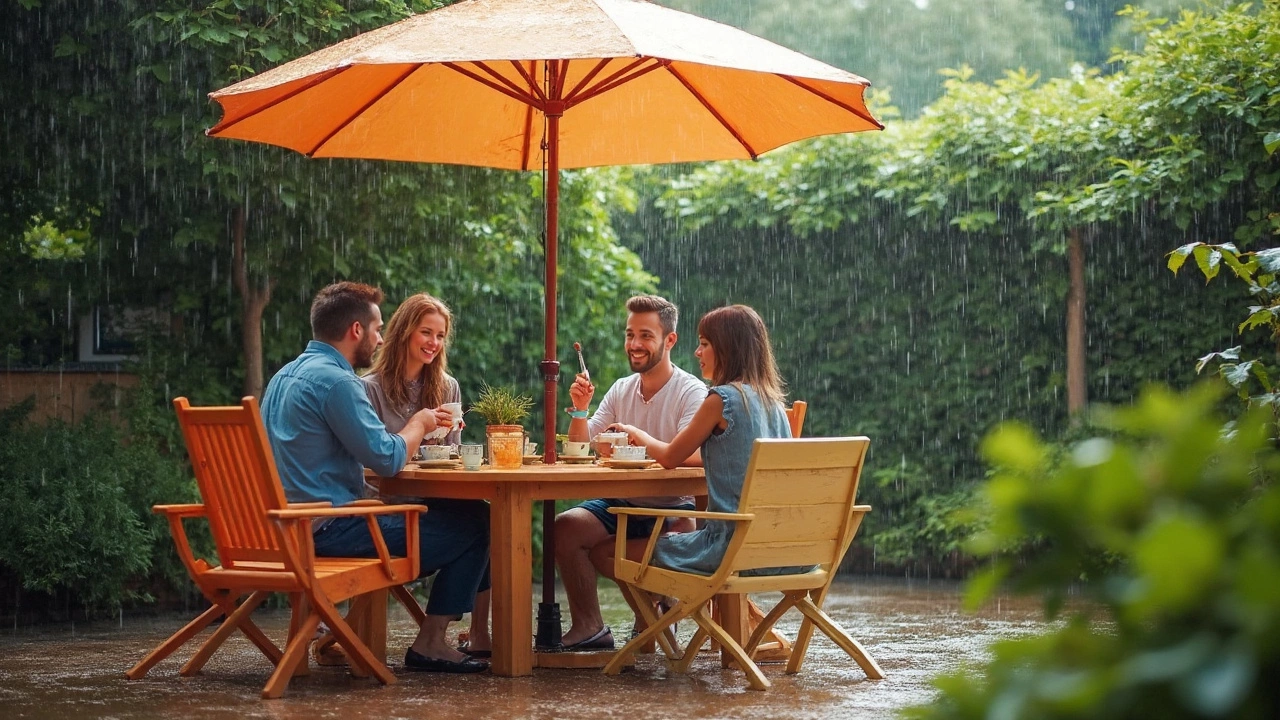Rainproof Material: Top Picks for Furniture That Beats the Weather
Got a patio, balcony, or even a covered porch? You’ll notice that rain can turn a beautiful piece into a soggy mess fast. That’s why picking the right rainproof material matters. It’s not just about looking good when it’s dry – you need something that stays strong, dry, and safe after the next downpour.
What Makes a Material Rainproof?
A rainproof material is designed to repel water, resist swelling, and avoid rust or rot. It usually has a sealed surface, a protective coating, or a dense weave that stops moisture from soaking in. The key is durability: the material should keep its shape and color after repeated wet‑dry cycles without cracking or weakening.
Best Rainproof Materials for Indoor and Outdoor Pieces
Here are the most reliable options you’ll find on the market:
Powder‑coated aluminum – Light, strong, and naturally rust‑free. The powder coating adds a watertight shield that won’t chip easily.
Teak with oil finish – Classic wood that lasts for decades when you apply a regular oil treatment. The oil fills the grain, keeping water out.
Synthetic wicker (resin or polyethylene) – Looks like natural rattan but doesn’t absorb water. It’s UV‑stable and easy to clean.
Oil‑treated canvas or Sunbrella fabric – Tight weave and a water‑repellent coating make these fabrics perfect for cushions and umbrellas.
High‑density polyethylene (HDPE) plastic – Used for deck chairs and storage boxes, HDPE is tough, non‑porous, and handles rain without warping.
Each of these options balances looks and performance, so you can pick based on style, budget, and where the piece will sit.
When you shop, check the product description for a water‑resistance rating (often listed as “Mold‑Resistant” or “Water Repellent”). A quick spray test at home can confirm the claim – a drop should bead up and roll off, not soak in.
Maintenance is simple but essential. For metal pieces, wipe down with a damp cloth and dry promptly to avoid streaks. Wood needs a fresh coat of oil or sealant every 6‑12 months, depending on exposure. Fabric cushions benefit from a protective spray and regular vacuuming to keep mildew away.
Cost varies. Powder‑coated aluminum and synthetic wicker tend to be mid‑range, while premium teak can be pricey but lasts longer if you maintain it. HDPE is usually the most affordable and still performs well in rain‑heavy climates.
Bottom line: choose a material that matches your climate, usage pattern, and design taste. A rainproof sofa, table, or chair will stay comfortable and attractive season after season, saving you time and money on replacements.
Ready to upgrade? Look for the keywords above on product pages, ask sales staff about water‑repellent treatments, and pick the material that feels right when you touch it. Your furniture will thank you the next time the clouds open up.
Best Material for Outdoor Furniture in Rain: What Really Holds Up?
When it starts pouring, choosing the right material for outdoor furniture can mean the difference between lasting comfort and a soggy mess. This article breaks down which materials stand up to rain, from teak to plastic. We’ll dig into real-life maintenance, practical tips, and what you should totally avoid. Whether you’re hosting in the backyard or just want someplace dry to sip your morning coffee, the guide is no-nonsense and straight to the point. Be ready for any weather and keep your furniture looking sharp.
More
